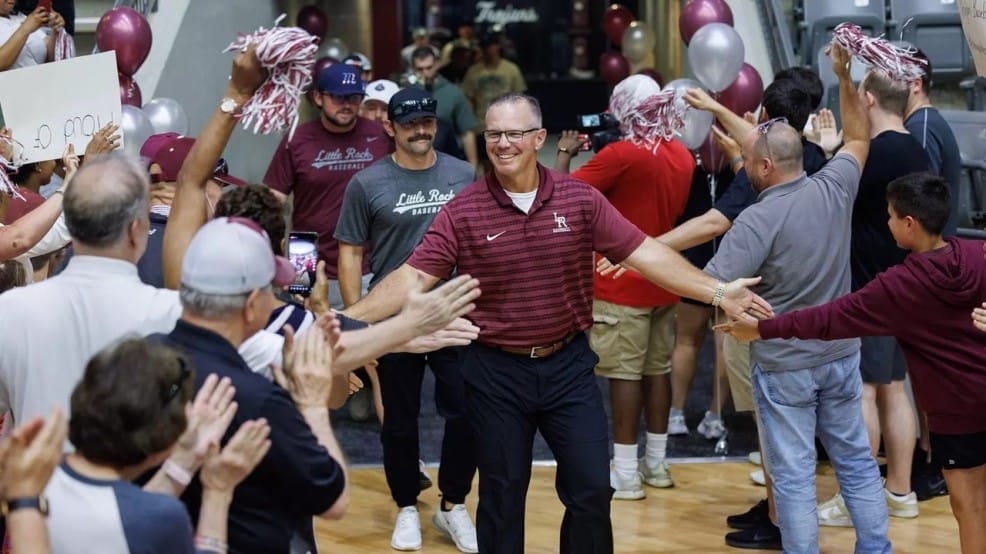

Uh oh...
It appears that you're using a severely outdated version of Safari on Windows. Many features won't work correctly, and functionality can't be guaranteed. Please try viewing this website in Edge, Mozilla, Chrome, or another modern browser. Sorry for any inconvenience this may have caused!
Read More about this safari issue.

STEM and STEAM education are taking center stage in Arkansas schools and with home educators across the state. This learning approach focuses on Science, Technology, Engineering, and Math (with the addition of Arts in STEAM) to provide a foundation for understanding the world around us. It goes beyond memorizing facts and dives into hands-on learning. Students might dissect a frog in biology, build a model bridge in physics, code a simple game to explore computer science or compose music inspired by the wonders of space!

Photo from BalloonSAT Mission #68 courtesy of Dr. Ross Carroll
Here in Arkansas, there’s a strong push for these approaches, and I regularly seek opportunities to apply hands-on learning with my son. I value these experiences for George because they’ll expose him to a range of subjects while he’s young. This exploration will help him discover his interests and passions, giving him a head start on choosing a future career path he loves! This means George might be building robots, analyzing weather patterns, or even participating in programs like Arkansas BalloonSat, which launches data collection balloon experiments to the edge of space!
Funded by the Arkansas Space Grant Consortium, the Arkansas BalloonSat program is a unique initiative combining scientific research with K-12 and undergraduate education. Founded in 2006 by Dr. Tillman Kennon, professor emeritus at Arkansas State University, the program utilizes high-altitude balloon missions to provide students with hands-on opportunities to conduct experiments at the edge of space, otherwise known as the stratosphere.
The program achieves this by launching payloads designed or built by students. These payloads often focus on atmospheric sensing or imaging projects. They may carry cameras, radio transmitters and devices that measure temperature, altitude, water vapor and humidity. A team on the ground tracks and monitors the results.
Recently, the Arkansas BalloonSat team has concentrated on capturing images of the moon’s shadow during total solar eclipses from the vantage point of the stratosphere. During the April 2024 solar eclipse, the team launched balloons from Petit Jean Mountain in Morrilton. And, as the 2023-2024 school year wound down, Dr. Kennon, along with Dr. Ross Carroll and a team of physics and computer science students at Arkansas State University, launched the program’s 68th balloon from the town of Russell. My son George and I participated in the launch and learned about the program.
Near Space Balloon Launch Timeline
Pre-Launch
Payloads are built. In the days and weeks before a launch, decisions are made regarding the specific data that will be collected. Students will design and build the payloads that will contain monitoring instruments and be carried by the balloon to the edge of space.
A launch site will be selected. The site may be specific, as was the case with the eclipse day launch. Other times, as with the launch from Russell, the site may be selected based on weather conditions and, more importantly, where the balloon is expected to land.
Launch
The flight team dispatches to the launch site. Once on site, the balloon is carefully inflated with helium, the payloads are attached to a tether along with a parachute and the flight team prepares for launch.
A test balloon will be launched. Launching a small test balloon helps the team determine if any changes need to be made to the launch site based on how quickly the balloon goes vertical or horizontal. The goal is to get enough vertical lift that powerlines and trees are no longer a concern before the balloon begins to move horizontally.
The balloon is prepared. The balloon will be stretched out onto a tarp and filled with helium. A parachute and the payloads will be tethered to the balloon. The amount of helium needed will be determined by the weight of the payload. Helpers will wear soft gloves to protect the balloon if it bounced around by the wind.
The balloon is launched. The tethered balloon is extended and a countdown to launch occurs before the balloon and its payload are released.
Post Launch
Data begins coming in. Once the balloon is launched, things move quickly. Data immediately begins transmitting via radio and satellite transmitters to the launch team and a data collection team that is located back at the university. Data includes altitude and GPS location which allows the teams to track the balloon carefully. If all systems work correctly they can also receive video transmission from the onboard cameras.
The balloon is recovered. What goes up must come down and recovery will occur several hours after the launch. Once the balloon is released, it is at the mercy of the elements. While the team does have the ability to remotely release helium from the balloon, it cannot control direction or speed. The balloon will likely burst at some point and everything will gently float back to earth by parachute.
Data is collected. After the launch photographic, video and scientific data is aggregated. The data may be combined with data from other project participants or used by the university to study different components of the launch. The information may be used in studies or scientific papers such as this study on Temperature and Water Vapor Profiles over Northeast Arkansas.
The Russell Launch
The Russell Launch marked the team’s 68th launch. The balloon was launched from Russell on the morning of May 1, 2024. The balloon climbed at a rate of 1000 feet per minute eventually reaching 90,000 feet or 17 miles above the ground where it floated for approximately an hour. The balloon came down in a field near Waldenberg and was retrieved by the launch team approximately 4 hours after its launch.
How to Get Involved
The Arkansas BalloonSat team launches approximately four to five balloons each year, but the Arkansas Space Grant Consortium hosts projects across the state all year long in connection with fifteen member universities, which in turn work with local communities and schools. Check with a school near you to find local programs for students.
Cover photo of Russell, Arkansas from a Near Space Balloon courtesy of Dr. Ross Carroll.
We do the work.
You check your email.
Sign up for our weekly e-news.
Get stories sent straight to your inbox!













Like this story? Read more from Julie Kohl
There’s something about reading outdoors that makes a good book even...
Family vacations with teenagers can be a juggling act. Between sports...
There’s something magical about reading aloud, and it doesn’t have to...
Join the Conversation
Leave a Comment